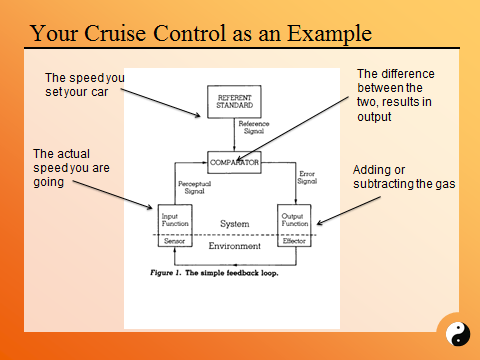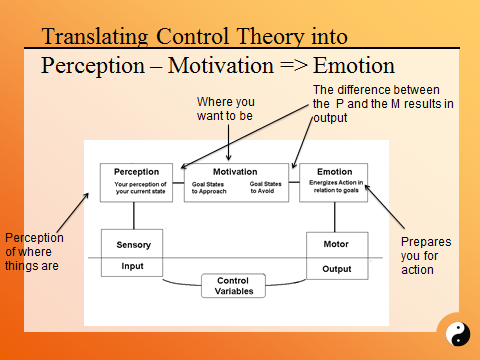Pornography
Perceptions, Motives, and Emotions: A Control Theory Model
Exploring the linkages between perceptions, motives, and emotions
Posted June 4, 2013
When I was an undergrad I took a course on feminism that was interesting and challenging, but one of the things I remember most from it was only peripherally related to feminism per se. In one part of the class we analyzed pornography and were exposed to some arguments as to how it potentially diminished or objectified women in ways that were problematic. At the time, a part of me internalized that message and thus a part of me saw pornography as “bad,” at least to the extent that it did these things. At the same time, my girlfriend (now my wife) was going to a different university and I had a normal, strong, healthy libido. As such, I had significant urges to watch pornography, while I also felt some moral concerns about it.
It was my observations of my internal processes that gave me clues to the interesting relationship between perceptions, motives (or drives) and emotions (or feelings). I am guessing that many people who feel conflict about engaging in any number of different kinds of activities can relate to what I experienced. As the time away from my girlfriend increased, my libidinal urges would grow and the motive to watch porn would begin to pick up steam. As that happened, the feminist voices in my head would be getting softer and softer, until a threshold was reached and would I head out to pick up a video (back in those days, you needed to take a trip to the video store to gain access to porn). What was striking for me as a psychologist was to observe the radical transformation that would take place in me in regards to how I would experience the pornography. At first, the images were alluring, gratifying, arousing, etc. But then, afterwards, I would have a completely different experience of the videos. The feminist voices in my head would return and I would literally experience the porn as unappealing and hop off the couch and hit the stop button as fast as could be allowed. Then, as days or weeks would pass, the pattern would repeat.
As an interested observer of my own psychology, I was always fascinated by these reactions. The fascination with them was not so much that they were hard to empathize with at a common sense level, but more so that there was not really any specific school of thought or handy formulation that helped me map these everyday experiences. For example, the simple S -> R frames of behaviorism or even Input -> Output frames of the standard cognitive models of the day did not seem to be helpful because they were fairly static. Freud’s drive model was better in this case, but it was well known that the hydraulic drive/energy release model that he offered was flawed.
What does work is the control theory formulation, and I have come to see the relationship between perceptions, motives, and feelings in control theory terms. Control theory is big in engineering and robotics, and although it has received some attention in psychology, it has not received nearly the attention I believe it deserves. Both the cruise control in your car and the thermostat in your home are examples of simple control systems. There are a minimum of three components to such a system: 1) an input sensor; 2) a reference goal; and 3) an output mechanism. In the case of cruise control, the speedometer is the input sensor, the speed at which you set the cruise control is the reference goal, and the output mechanism is the addition or removal of gas to accelerate or decelerate the car. Now put this system in motion. Say you set the cruise control reference level to 65 mph. If you start to head up a hill, your speed will drop and a discrepancy will emerge between the set reference level and the actual speed measured by the speedometer. That discrepancy will activate an output, which in this case is more gas. If too much gas is added, and your speed reaches 68 mph, then that difference results in decreasing the gas. In so doing, the car maintains a fairly specific speed, despite significant changes in external factors, such a wind and incline of the road.

Control theorists often use the following formulation to define the relationship between the key variables: input – reference goal => output. Now, let’s put this in human terms and think about the input being your perceptions of things in the environment, your motives to approach and avoid certain states your reference goals and your emotions being feeling states that energize your actions. In shorthand, this can be represented by P – M => E, where the “P” refers to perception, “M” to motivation, and “E” to emotion. Verbally, this formulation translates into perception of an actual state relative a motivated state leads to an emotional state.
The control theory formulation helps us explain how our behavior is guided in every day contexts. First, depending on things like recent activity, biological homeostasis variables, and learned context, motivational states can either be latent or active. Second, emotional reactions track goal related investments. Third, there is a feedback loop that guides the system. For example, imagine you are camping and after about six hours between meals an internal state of hunger activates a goal template of eating a sandwich in the cooler. In that state you would be motivated to reduce the discrepancy between where you were and the end goal state of eating the sandwich. However, if you stepped out of your tent on the way to the cooler and saw a bear, a very different goal template would be activated, which would be one of your being safe, far away from the bear. Indeed, the perception of a bear would initiate a cascade of bodily responses, readying you for fight or flight. Some of those responses would include a massive sympathetic nervous system shift activating muscles and attention and energy would be diverted away from processes like digestion, and it is likely you would not feel hungry for quite some time after that occurrence.

Likewise, we can return to the example above and see that what is happening is that my libidinal motivation was fluctuating, which means that there are fluctuating goal states. In addition, the framework suggests that there is a deep connection between perception, motivation and feelings. Empirical work demonstrates this. For example, hungry individuals or individuals who are sexually aroused will be more likely to see food or sexual organs in Rorschach Inkblots. In addition, the formulation connects our feeling states both to actions and to goals.
So, next time you are interacting with your environment, think about your actions being guided by your perceptions referenced against your goal states, which in turn activate emotions that energize and organize your actions.


